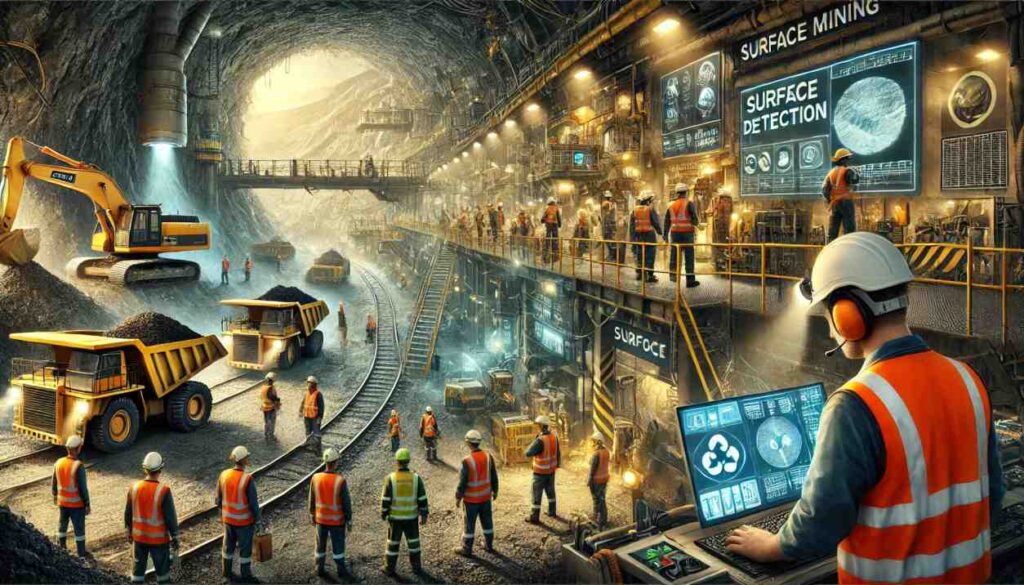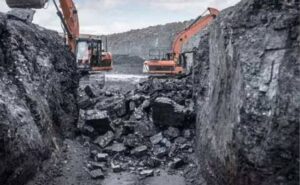
Introduction

Coal mining is a vital industry in India, fueling key economic sectors and providing employment to thousands. However, safety in coal mines remains a top priority, as workers are exposed to hazardous conditions daily. The Ministry of Coal, overseeing major companies like Coal India Limited (CIL), NLC India Limited (NLCIL), and Singareni Collieries Company Limited (SCCL), has been actively working to enhance safety and health standards in coal mines. This article explores the latest safety regulations, health initiatives, and emergency preparedness efforts in the industry.
Safety Regulations and Compliance in Coal Mining
Legal Framework for Mine Safety
Coal mining in India operates under strict legal guidelines to ensure worker safety. The Mines Act of 1952, administered by the Directorate General of Mines Safety (DGMS), serves as the foundation for coal mine safety regulations. Additionally, the Mines Rules of 1955 and the Coal Mine Regulations of 2017 establish guidelines for safe mining practices. DGMS enforces these laws through periodic inspections and regulatory updates.
Risk Assessment and Safety Plans
To prevent accidents, coal companies prepare Site-Specific Risk Assessment-based Safety Management Plans (SMPs) and Principal Hazards Management Plans (PHMPs). These plans help identify potential hazards and outline procedures to minimize risks. Some key safety measures include:
- Regular safety training sessions for workers and supervisors.
- Strict safety audits conducted by multi-disciplinary teams.
- Monitoring and enforcement of site-specific traffic rules for mine vehicles.
- Adoption of blast-free mining techniques, such as eco-friendly surface miners, to enhance workplace safety.
Technology in Mine Safety
Coal companies are integrating advanced technology to enhance safety. Some of the latest innovations include:
- Real-time environmental monitoring to detect harmful gases.
- Automated fire detection systems to prevent mine fires.
- GPS-based tracking systems for heavy mining equipment.
These technological advancements play a crucial role in improving safety standards across both opencast and underground mines.
Health Initiatives for Coal Mine Workers
Prevention of Occupational Diseases
Coal miners are vulnerable to occupational diseases caused by prolonged exposure to dust and other harmful substances. Two significant health risks include:
- Coal Workers’ Pneumoconiosis (CWP) – a lung disease caused by inhaling coal dust.
- Silicosis – a respiratory illness caused by exposure to silica particles.
Due to strict dust control measures and improved ventilation systems, no recent cases of these diseases have been reported in Indian coal mines.
Medical Examinations and Health Check-ups
Health monitoring is a critical component of worker safety. Coal companies conduct:
- Pre-employment medical examinations to ensure workers are fit for duty.
- Periodic medical examinations (PMEs) as mandated by the Mines Rules of 1955.
- Annual medical examinations for workers aged 51 to 60 years.
- Pre-retirement health screenings for employees nearing retirement.
In addition, special chest X-rays and sputum tests are conducted for workers handling food and essential supplies.
Health Awareness and Training
Regular health training sessions are organized to educate miners about occupational health risks. Special training programs also focus on the impact of climate change on health, helping workers adapt to changing environmental conditions.
Continuous Monitoring and Emergency Preparedness
Round-the-Clock Safety Supervision
Coal mining safety is a continuous effort that involves constant supervision and regulatory checks. Coal companies enforce:
- Regular inspections by competent safety supervisors.
- Backshift safety inspections conducted by senior officials.
- Workmen inspectors ensuring compliance across different shifts.
Emergency Response and Evacuation Plans
Preparedness for emergencies is a crucial aspect of mine safety. As per the Coal Mine Regulations of 2017, all mines must have a formal Emergency Response and Evacuation Plan (ER & EP). These plans include:
- Defined emergency procedures for different crisis situations.
- Regular emergency drills to train workers on evacuation protocols.
- Installation of rescue stations equipped with advanced first aid facilities.
Technology in Emergency Preparedness
Many coal mines now use real-time hazard detection systems, including:
- Automated fire suppression systems to prevent underground fires.
- GPS-based tracking for emergency personnel and rescue teams.
- Digital communication systems for better coordination during crises.
Conclusion
India’s coal mining industry is making significant progress in improving safety standards and ensuring worker health. Through strict compliance with safety regulations, the adoption of advanced technology, and proactive health initiatives, coal companies are reducing risks and creating a safer work environment. As the industry evolves, continuous monitoring, training, and investment in modern safety technologies will remain crucial in protecting the lives of coal miners.


